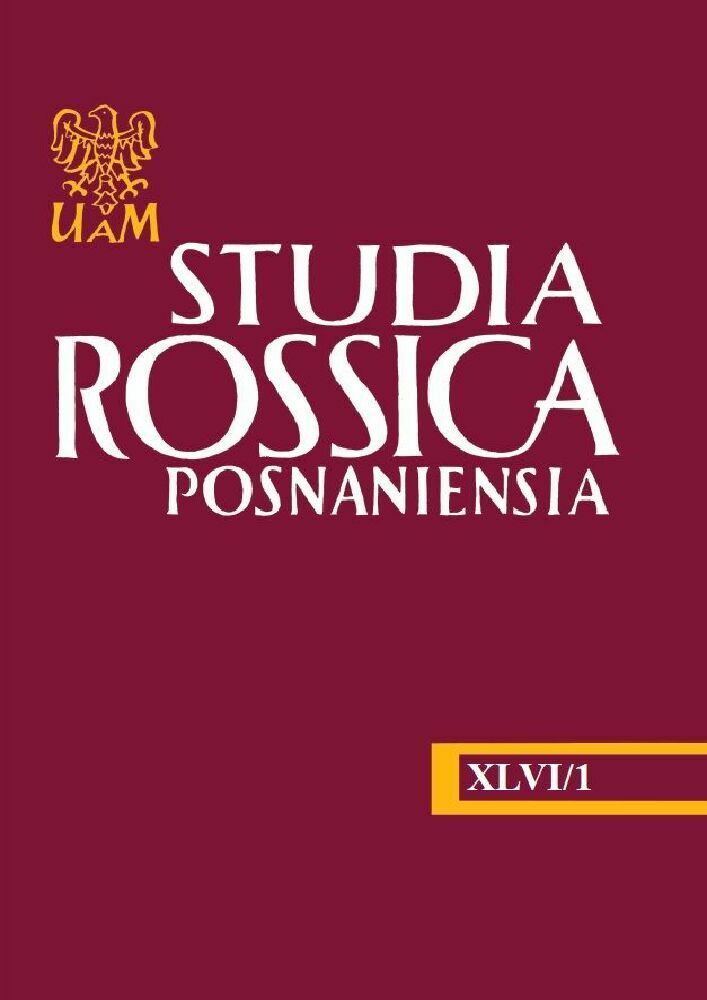Abstract
On the basis of the existing and unquestioned linguistic stance, a division of all the living creatures inhabiting the Earth into those which do not have language (i.e. prehuman and languageless) and those who have language (i.e. the genus Homo sapiens) is postulated. The paper briefly discusses a rich diversity of communication modes occurring in the domain of the prehuman communication systems, such as the auditory, visual, tactile, olfactory, electric, thermal, and seismic ones, with appropriate graphic illustrations. Furthermore, on the basis of the phenomenon of the observable shrinking of this diversity and the key position of the human species, it postulates the necessity of preserving this diversity in the context of biodiversity. This major postulate is in accord with the need to intensify attempts to preserve biodiversity as well as preserve the remaining diversity on the level of the prehuman communication systems as a major challenge of modern humanity. In this context, the human species is considered here as the species of the ‘overseers’ and ‘archivers’ of all the existing communication systems existing on the Earth as the carrier of the tree of life.
References
Baeckens, Simon. „Evolution of animal chemical communication: insights from non-model species and phylogenetic comparative methods”. Belgian Journal of Zoology, 149, 1, 2019, s. 63–93.
Benton, Michael J., red. The fossil record 2. London, Chapman and Hall, 1993.
Briggs, Derek E. G., Peter R. Crowther. Paleobiology II. Oxford, Blackwell Scientific Publications, 2001.
Campbell, Angela L. et al. „Biological infrared imaging and sensing”. Micron, 33, 2002, s. 211–225.
Cardinale, Bradley J. et al. „Biodiversity loss and its impact on humanity”. Nature, 486, 2012, s. 59–67.
Czech-Damal, Nicole U. et al. „Electroreception in the Guiana dolphin (Sotalia guianensis)”. Proceedings of the Royal Society B, 279, 2012, s. 663–668.
Darwin, Charles. The expression of the emotions in man and animals. London, John Murray, 1872/1892.
Drobnick, Jim, red. The smell culture reader. Oxford, Berg Publishers, 2006.
Eberhard, David M., Gary F. Simons, Charles D. Fennig, red. Ethnologue: languages of the world. 22 ed. Dallas, TX, SIL International, 2019.
Ferdenzi, Camille et al. „Idividual differences in verbal and non-verbal affective responses to smells: Influence of odor label across cultures”. Chemical Senses, 42, 2017, s. 37–46.
Foucault, Michel. Discipline and punishment: The birth of the prison. New York, Vintage Books, 1977.
Gould, Stephen J. The structure of evolutionary theory. Cambridge (Mass.), Harvard University Press, 2002.
Gould, Stephen J. Wonderful life: The Burgess Shale and the nature of history. New York, W.W. Norton, 1990.
Gracheva, Elena et. al. „Molecular basis of infrared detection by snakes”. Nature, 464, 2010, s. 1006–1011.
Hauser, Marc D. The evolution of communication. Cambridge (Mass.), The MIT Press, 1997.
Hockett, Charles F. „The origin of speech”. Scientific American, 20, 1960, s. 89–96.
Hockett, Charles F. „The problem of universals in language”. Universals of language. Red. Joseph H. Greenberg. Cambridge (Mass.), The MIT Press, 1963/1966, s. 1–29.
Hoffmann, Beata. Perfumy. Uwarunkowania kulturowo-społeczne. Kraków, Oficyna Wydawnicza Impuls, 2013.
Jablonski, David, Douglas H. Erwin, Jere H. Lipps, red. Evolutionary paleobiology. Chicago, The University of Chicago Press, 1996.
Kardong, Kenneth V., Stephen P. MacKessy. „The strike behavior of a congenitally blind rattlesnake”. Journal of Herpentology, 25, 2, 1991, s. 208–211.
Kishida, Ryo et al. „A suspected infrared-recipient nucleus in the brainstem of the vampire bat, Desmodus rotundus”. Brain Research, 322, 1984, s. 351–355.
Linnaeus, Carl. Systema naturae sive regna tria naturae systematice proposita per classes, ordines, genera, & species. Lund, Haak, T. i J.W. de Groot, 1735.
Nöth, Winfried. Handbook of semiotics. Bloomington (IN), Indiana University Press, 1995.
Puppel, Joanna. „Wskaźnikowość twarzy ludzkiej: krótki przegląd problematyki”. Scripta Neophilologica Posnaniensia, 16, 2016, s. 201–206.
Puppel, Stanisław. „ECOLI[S]: essays and notes on ecolinguistic synergy and synthesis”. Scripta de Communicatione Posnaniensi. Seria: Prace Naukowe Katedry Ekokomunikacji UAM. T. 8. Poznań, Zakład Graficzny UAM, 2017.
Puppel, Stanisław, red. Ochrona języków naturalnych. Scripta de Communicatione Posnaniensi. Seria: Materiały Dydaktyczne Katedry Ekokomunikacji UAM. T. 1. Poznań, Zakład Graficzny UAM, 2007.
Puppel, Stanisław. „An outline of a domain-resource-agent-access-management (DRAAM) model of human communication: towards an ecology of human communication”. Electronic Journal Oikeios Logos, 1, 2004, s. 1–26.
Puppel, Stanisław. „Uwagi w sprawie zachowania lingworóżnorodności w kontekście bioróżnorodności”. Humanistica, 21, 2019, s. 59–71.
Puppel, Stanisław, red. A bibliography of writings on the origins and evolution of language and communication. A tribute to science (evolving). Poznań [w druku].
dos Reis, Mario, Philip C. J. Donoghue, Ziheng Yang. „Bayesian molecular clock dating of species divergences in the genomics era”. Nature Reviews Genetics, 8, 2015, s. 1–12. DOI: 10.1038/nrg.2015.8.
Ruse, Michael, red. The Oxford handbook of philosophy of biology. Oxford, Oxford University Press, 2008.
Sebeok, Thomas A. Perspectives in zoosemiotics. The Hague, Mouton, 1972.
Stoka, Angel M. „Phylogeny and evolution of chemical communication: an endoctrine approach”. Journal of Molecular Endocrinology, 22, 1999, s. 207–225.
Süskind, Patrick. Pachnidło. Historia pewnego mordercy. Przeł. Małgorzata Łukasiewicz. Warszawa, Świat Książki, 1990.
Süskind, Patrick. Das parfum. Die Geschichte eines Mörders. Zürich, Diogenes Verlag, 1985.
License
THE ARTICLES ARE PUBLISHED UNDER THE CREATIVE COMMONS LICENCE:
Attribution-NonCommercial-ShareAlike 4.0 International License.
Authors of texts accepted for publication in “Studia Rossica Posnaniensia” are required to complete, sign and return to the editor's office the Agreement for granting a royalty-free license to works with a commitment to grant a Creative Commons sub-license.
Under the agreement, the authors of texts published in “Studia Rossica Posnaniensia” grant the Adam Mickiewicz University in Poznań a non-exclusive, royalty-free license and authorize the use of Attribution-NonCommercial-ShareAlike 4.0 International (CC BY-NC-SA 4.0).
The authors retain the right to continue the free disposal of the work.
Internet users are entitled to use works published in “Studia Rossica Posnaniensia” since 2016, for non-commercial purposes only, under the following conditions: https://creativecommons.org/licenses/by-nc-sa/4.0/
Adam Mickiewicz University in Poznań retains the right to magazines as a whole (layout, graphic form, title, cover design, logo etc.).

